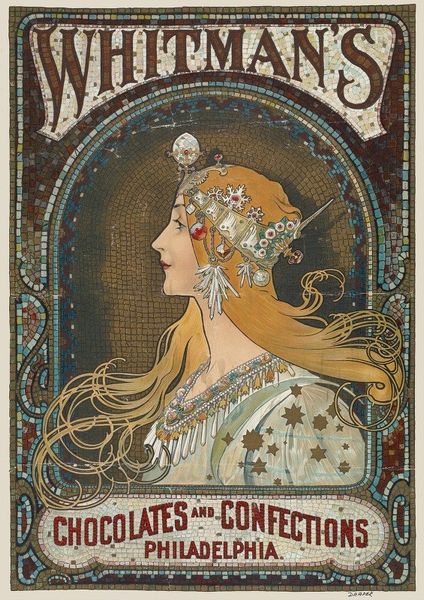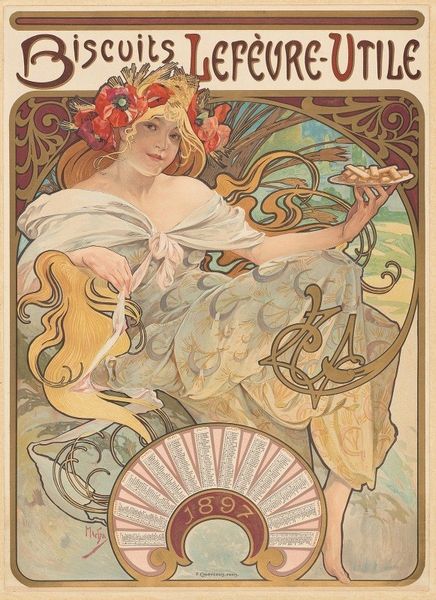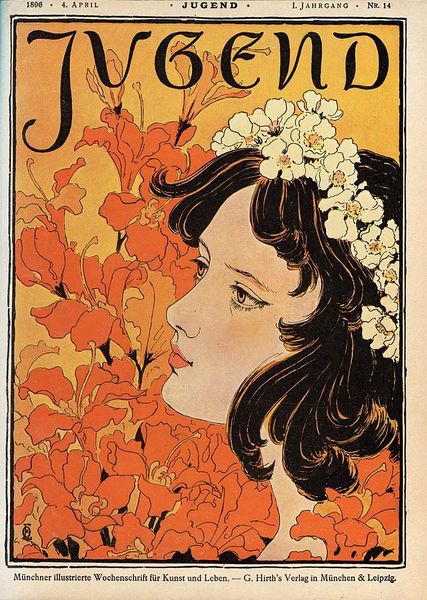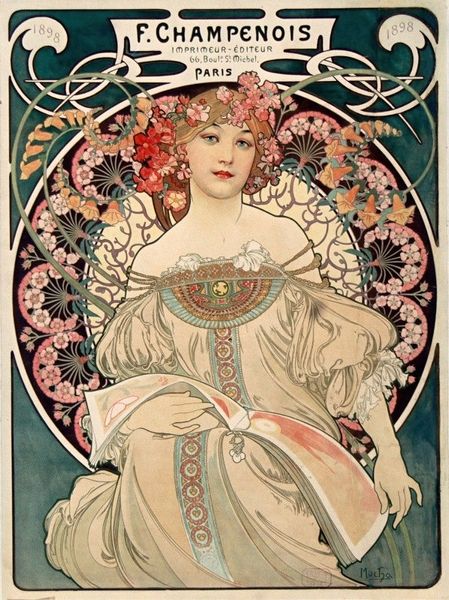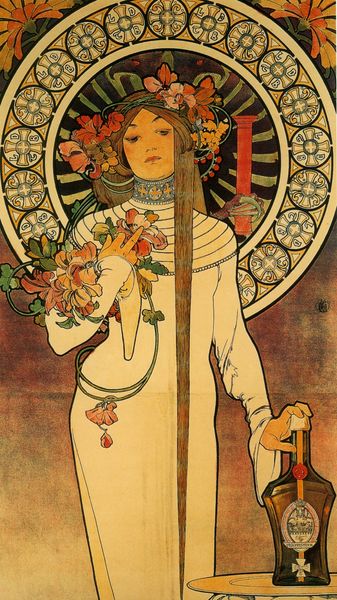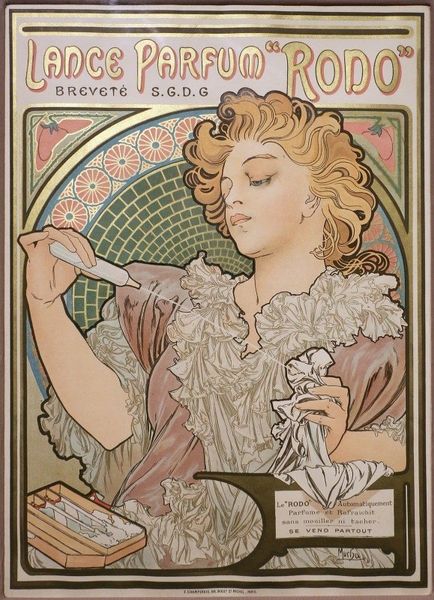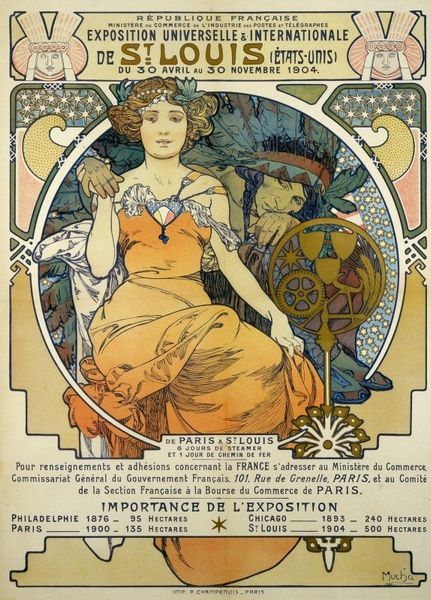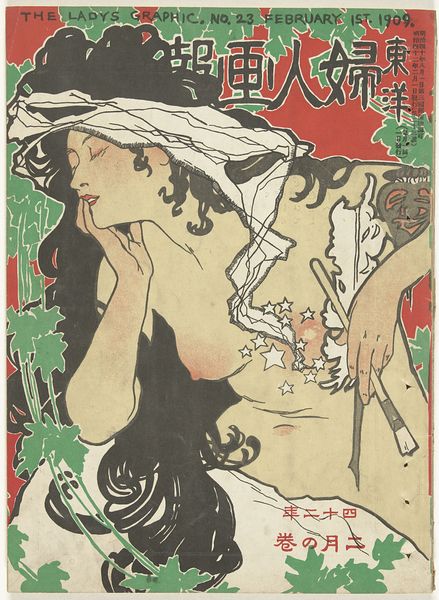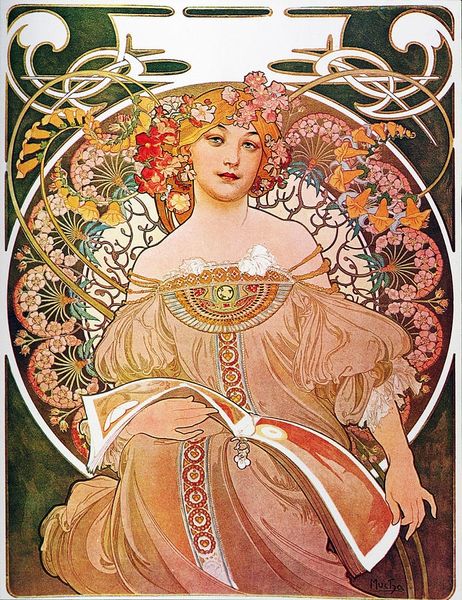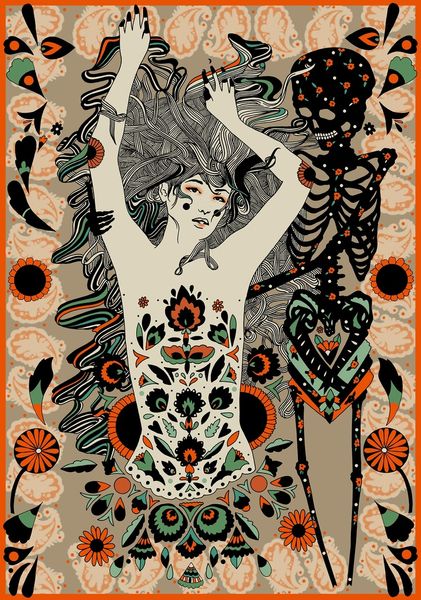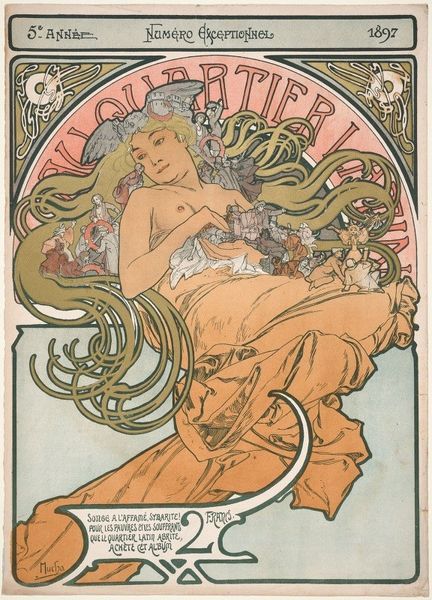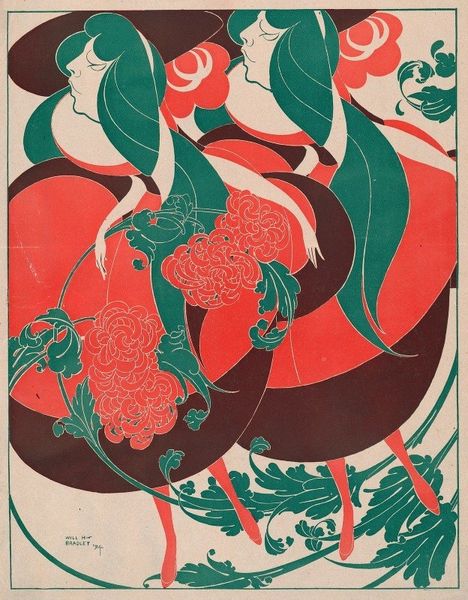
lithograph, poster
#
portrait
#
art-nouveau
#
lithograph
#
decorative-art
#
poster
Dimensions: 51.5 x 37 cm
Copyright: Public domain
Curator: Looking at this chromolithograph from 1897, created by Alphonse Mucha, titled “Soap Factory of Bagnolet”, the Art Nouveau influence is undeniable. Editor: The elegance is striking! The earth tones, the woman in profile, with her ornate jewelry... it feels simultaneously ancient and modern. But beyond the aesthetic, I’m immediately drawn to the underlying narrative here – a commercial piece idealizing beauty alongside labor and consumption. Curator: Exactly! Mucha designed this advertisement poster for Alfred Schweizer’s soap factory in Bagnolet. It’s more than just an ad; it encapsulates the Art Nouveau vision of integrating art into everyday life. Look how he weaves together the calendar with a central, idealized female figure. He's turning consumerism into art. Editor: That positioning of the female figure… her almost goddess-like presentation definitely obscures any harsh realities that factory workers—particularly women—might have faced in similar contexts at that time. I mean, it feels romanticized to the point of being misleading. Curator: While I understand that critique, it’s essential to remember that advertising from this period often relied on idealized imagery. Mucha was attempting to elevate the soap brand by associating it with beauty, sophistication, and this sense of timeless elegance. Editor: Perhaps. Still, it makes me consider the social role these types of posters played in shaping aspirations and dictating beauty standards, reinforcing consumerist ideals that were inaccessible for many women and normalizing expectations around domestic and personal hygiene at a turning point in gender norms. Curator: True. Art isn’t created in a vacuum. This poster acts as both an aesthetic marker of Art Nouveau’s public-facing style and a fascinating case study of visual persuasion in its historical moment. It allows us to ask interesting questions about how aesthetics shape perceptions, class, and aspiration. Editor: Absolutely. Engaging with the layers of art and social implications is crucial. Seeing past surface-level beauty, interrogating the image's context, and acknowledging its potentially problematic facets lets us examine the historical values embedded within artworks like these. It’s a chance to spark dialogue, even discomfort—but that can be valuable!
Comments
No comments
Be the first to comment and join the conversation on the ultimate creative platform.
